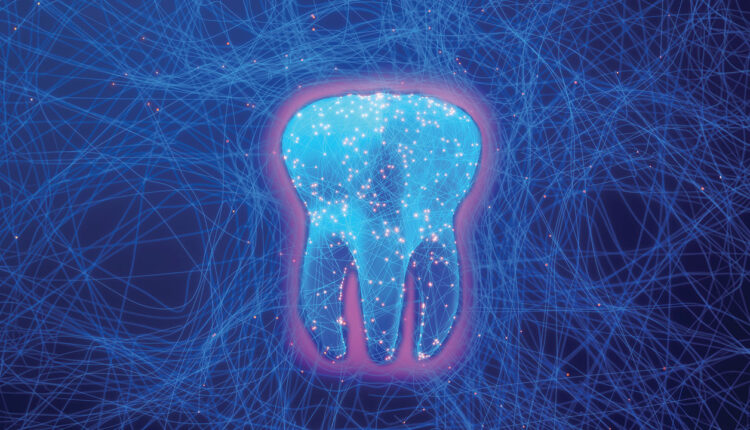
Tackling Tooth Sensitivity
With nearly one in three patients affected by dentinal hypersensitivity, clinicians can draw on a growing arsenal of treatments to provide lasting relief.
Dentinal hypersensitivity is a common patient complaint, with a variable reported prevalence rate ranging from 11% to 36% of the population.1 While identifying the root cause of dentinal hypersensitivity is difficult and may be subjective, investigating its etiology is a prudent first step. Often etiologies are multifactorial and patients may experience many underlying causes of dentinal exposure and subsequent dentinal hypersensitivity. Initial causes of gingival recession can include periodontal phenotype, inflammatory periodontal disease, toothbrush abrasion, acid erosion, behavioral factors, and anatomical factors.2
Principles of Therapy
Treatment is then based on addressing the underlying issue. As the hydrodynamic theory is the best explanation for stimuli transmission through the dentinal tubules, the principles of therapy for dentinal hypersensitivity include:
- Reduction or elimination of irritating stimuli
- Dentinal tubule obliteration
- Dentinal tubule coverage
- Prevention of nerve activation and transmission
Elimination diets and addressing traumatic habits, utilization of restorative or soft-tissue grafting approaches to cover exposed root surfaces, products to precipitate material into exposed dentinal tubules, and nerve depolarization may also help reduce sensitivity.
Treatment Options
Myriad products are available to help patients mitigate sensitivity-associated pain, with new approaches being introduced regularly. Fluoride- and potassium nitrate-containing dentifrices/gels are the most commonly used at-home treatments with both demonstrating efficacy in reducing discomfort.3 Arginine-containing gels and dentifrices enhance the anti-sensitivity effects more than fluoride-containing materials alone. Hydroxyapatite also provides antisensitivity benefits.
When it comes to options for professionally applied desensitizers, most of the products contain similar ingredients to at-home applications, including fluoride, arginine, and oxalate. Silver diamine fluoride has been shown to be particularly effective in reducing dentinal hypersensitivity, but, in some clinical circumstances, it can result in discoloration of tooth structure and esthetic compromise.4 Additionally, glutaraldehyde, hydroxyethyl methacrylate (HEMA), and bonding agents can be applied professionally and have demonstrated a longer period of relief than medicaments applied at home.5
With ongoing research investigating new options for hypersensitivity treatment, additional methods may be available in the near future. The Nd:YAG laser may result in superior occlusion of dentinal tubules and laser therapy also appears to increase the effectiveness and duration of action of other traditional methods of tubule occlusion through topically applied therapies.6
Dendrimers, hyperbranched nanoparticle structures, along with their surface modifications, can be used in dental biomaterials for biomimetic remineralization of enamel and dentin. In particular, polyamidoamine dendrimers have demonstrated remineralization within dentinal tubules and decreased dentinal hypersensitivity.7
When sensitivity is accompanied by gingival recession, a thorough assessment to determine the feasibility and predictability of root coverage procedures with mucogingival surgery should be considered. When indicated, these treatments can reduce hypersensitivity, as well as improve gingival recession defects and improve gingival biotype, including tissue thickness and the width of keratinized and attached gingiva. Such alterations make these sites less susceptible to future gingival recession and reduce the risk of tooth structure loss and the development of dentinal hypersensitivity.
For extremely rare cases that do not respond to any of the treatment options, root canal therapy and cervical restorations may be considered as therapies.
References
- Zeola LF, Soares PV, Cunha-Cruz J. Prevalence of dentin hypersensitivity: Systematic review and meta-analysis. J Dent. 2019:81:1-6.
- Davari A, Ataei E, Assarzadeh H. Dentin hypersensitivity: etiology, diagnosis and treatment; a literature review. J Dent (Shiraz). 2013 14:136–145.
- Ayan G, Missili T, Buldur M. Home-use agents in the treatment of dentin hypersensitivity: clinical effectiveness evaluation with different measurement methods. Clin Oral Investig. 2025;29:63.
- Kiesow A, Menzel M, Lippert F, Tanzer JM, Milgrom P. Dentin tubule occlusion by a 38% silver diamine fluoride gel: an in vitro investigation. BDJ Open. 2022;8:1.
- Canali GD, Ignacio SA, Rached RN, Souza EM. Clinical efficacy of resin-based materials for dentin hypersensitivity treatment. Am J Dent. 2017;30:201-204.
- Alzarooni AH, El-Damanhoury HM, Aravind SS, Rahman B. Combined effects of glutaraldehyde-based desensitizer and nd:yag laser on dentinal tubules occlusion. J Contemp Dent Pract. 2024;25:52-57.
- Wang T, Yang S, Wang L, Feng H. Use of multifunctional phosphorylated PAMAM dendrimers for dentin biomimetic remineralization and dentinal tubule occlusion. RSC Advances. 2015;5:11136-11144.
From Dimensions of Dental Hygiene. November/December 2025; 23(6):16-17.

